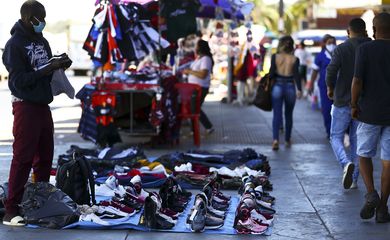Unemployment in Brazil rises to 6.8% in quarter ending in February

The unemployment rate for the quarter ending in February stood at 6.8 percent, marking an increase of 0.7 percentage points from the 6.1 percent recorded in the previous rolling quarter, which ended in November 2024.

The labor market data come from the Continuous National Household Sample Survey (Pnad Contínua), released in Rio de Janeiro by the Brazilian government’s statistics agency IBGE.
According to survey coordinator Adriana Beringuy, the rise in unemployment compared to the previous rolling quarter is a typical trend for this time of year.
“This is an expected trend, as the transition from the end of one year to the early months of the next typically brings a decline in employment,” Beringuy stated.
The number of unemployed people reached 7.5 million during the period, up 10.4 percent from the previous rolling quarter. However, this figure is 12.5 percent lower than in the same quarter of 2024.
Employed individuals and formal contract
In the quarter ending in February, Brazil’s employed population stood at 102.7 million. This represents a 1.2 percent decline from the previous quarter (1.2 million fewer people) but a 2.4 percent increase compared to the same period last year (2.4 million more people).
The IBGE survey also highlights that the country reached a record number of workers with formal contracts. There were 39.6 million contracts, the highest figure since the start of the historical series in 2012. Over the past year, 1.6 million more people (+4.1%) obtained formal contracts.
The IBGE study assesses the job market for individuals aged 14 and older, considering all forms of employment, including formal and informal contracts, temporary jobs, and self-employment, among others. A total of 211,000 households across all states and the Federal District were surveyed.
The informality rate—referring to workers without guaranteed rights such as vacation, Social Security contributions, and the year-end bonus—dropped slightly to 38.1 percent of the employed population, equating to 39.1 million informal workers. In both the quarter ending in November and the same period in 2024, the rate stood at 38.7 percent.






